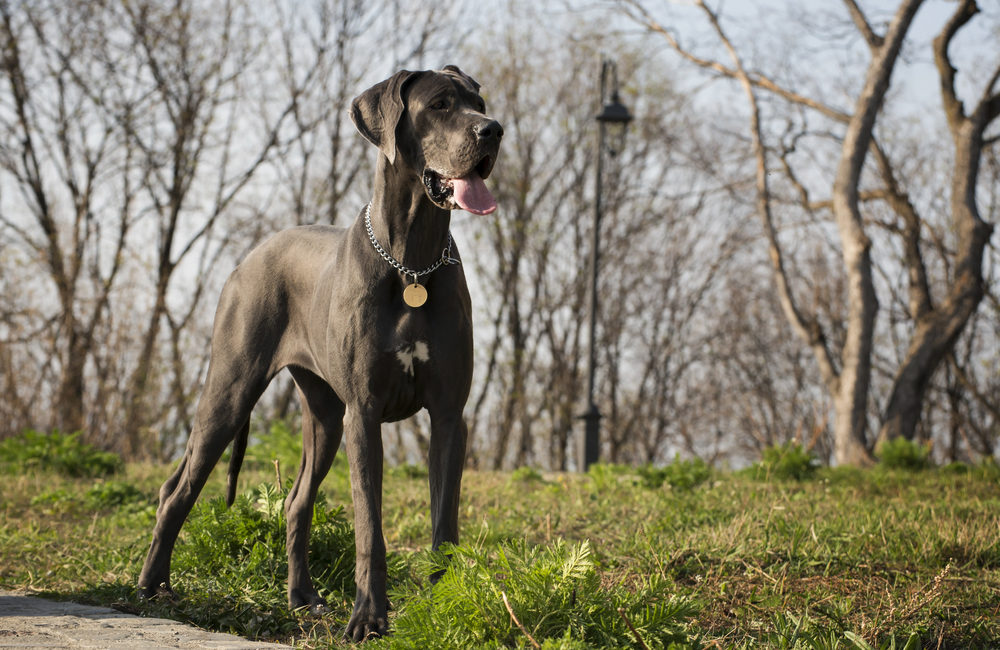In the veterinary field, there is a lot of things that we don’t want to say out loud for fear of tempting fate. Often times we refer to these words by their first letter only. Heaven forbid anyone says the “Q” word, more commonly known in the clinic as ‘quiet.’ That’s the easiest way to have everyone in the clinic shout at you because it means that the rest of the day will erupt into a multitude of emergency and critical cases. One of the many other dreaded words is bloat. Bloat is also known as gastric, and it may be something that you’ve heard of before, especially if you have a large breed dog. If someone in the clinic utters this word, then the universe will surely send at least one bloat case our way before the sun sets.
Gastric dilatation-volvulus (GDV) is when the stomach flips and then proceeds to fill with gas or vice versa. When the stomach fills with gas without flipping, it is known as gastric dilatation, but when the stomach flips it is known as volvulus. When it occurs in combination, the stomach fills with gas and flips, it is known as gastric dilatation volvulus. This condition is extremely painful and is fatal if not corrected. It can happen in any breed of dog, but it is most commonly seen in large and giant breeds. Large and giant breeds are considered to be Great Danes, Weimaraner, St. Bernards, and Greyhounds, to name a few. It is also frequently seen in dogs with deep chests; large chests, with narrow waists (think of a Greyhound).
When the stomach flips and fills with gas, it can fill to the point that it adds excessive pressure on to the diaphragm which can cause difficulty breathing. It can also cause reduced blood flow which will cause the stomach tissue to die. There is also a risk of the stomach rupturing due to the pressure and dead tissue. Due to the way the stomach rotates, it can also restrict the blood that flows back to the heart. All these things can lead to shock which can be deadly on its own. It’s extremely important that these dogs receive immediate medical attention to give them the best chances at survival.
The signs and symptoms of ‘bloat’ can include: standing and stretching, distended abdomen, non-productive retching, drooling, general signs of uncomfortableness. As the condition progresses, the dog’s condition can deteriorate. They may begin to pant excessively; due to the pressure on their chest, breathing can become very difficult. It is extremely important that these dogs receive immediate medical attention.
It’s important to consider the statistics about bloat when looking at getting a large breed dog so that you are prepared for what may happen. There are lots of studies that you can read in more detail should you want more information, just ensure that the information is coming from a legitimate source. You can check out this link where they have gathered some more information and statistics on ‘bloat.’
‘Bloat’ can be very scary, so most owners want to know what they can do to prevent it from happening. A couple of precautions can be taken to reduce the risk of ‘bloat.’ There is a surgery that can be performed, typically at the same time as their spay or neuter. This procedure is known as a gastropexy and involves suturing the stomach to the wall of the abdomen, which helps reduce the risk of ‘bloat.’ Gastropexies are very invasive surgeries, so it’s important that you have a conversation with your veterinarian about whether it is a good option for your dog. There are non-surgical precautions that you can take also. It is best to feed multiple smaller meals throughout the day as opposed to one large meal once a day. You should not let your dog play or exercise too much after eating a meal because this can cause the stomach to fill with gas and/or flip, leading to bloat. Make sure that your dog doesn’t inhale their food at the speed of light. This can cause them to ingest air with their food, leading to bloat. If you have a speed eater, there are multiple things you can do to slow them down. You can purchase a puzzle or a maze dish so that they are forced to slow down and work out the kibbles. If you didn’t want to purchase a special dish you can try placing the kibble onto a cookie tray so that they aren’t all close together like in a bowl. You can also feed them using a muffin tin as well, which works similar to a puzzle dish.
If you are looking to adopt a large breed dog make sure you do thorough research about the breed and talk with your veterinarian, they are there to help! I’m not trying to scare you away from getting a large breed dog, it’s just important to know and understand the breed and the associated health complications that come with them. Every dog has health risks that come with their specific breed so it’s not just large breeds.
If you have any questions or concerns about bloat or gastropexy’s, let us know and we are always happy to answer your questions.
Written by: Kelsey Hewgill, RVT




